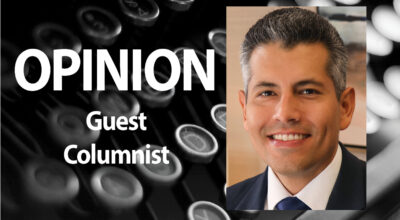Recap of the SH 105 Toll being discussed
Published 2:52 pm Monday, April 25, 2016
Editorial by Duane Gordy
There have been multiple articles, an interview and a few responses with questions raised from this business model. In the first article, we touched on the important fact that this is a plan in discussion, and we would just like to keep the public informed what is being discussed. There was also a proposed ecological benefit, and these two topics garnered a response from a concerned local citizen. It was stated this is nothing more than propaganda, but in fact, this is a very real plan. Even the author of the rebuttal stated they would use the toll road if it is reasonable, but not that frequently, and wishes to see traffic estimates. These estimates will come about as the project moves forward. It is important to remember, however, that this is private money building a public project that will NOT have taxpayer money or exposure in the development or return. If the project happened to fail it would be at the expense of the developer and its funding sources.
In the second article, we broached the subject of where the money for this project will come from, which would be private capital. When government decides to develop or build a toll project, is when tax payers may have to pay for it with tax dollars, but when a private capital decides to invest their money, exclusively, the funds provided do not take away from the people, and this is an important factor that needs to be remembered. There was another response about the Big Thicket and wetlands being a “prime natural area” to our region, and who the “we” is. This is very true, which is why we, as a group of people in the community along with local, state, and federal agencies are required to work together. This was addressed in an interview with KBMT 12. We stated multiple routes are being discussed which do not even approach the Big Thicket or wetlands, and we want to find a route people in the communities are comfortable with. The estimated costs of the toll were discussed in the interview, and current estimates are about $2.50 and will be presented in a public forum for discussion when that point of the project development arrives.
The third article published was to differentiate between the Federal agency and associations. The response to this article, and another, was an issue about failed tolls in Texas. This business model has had multiple people bring up a single project, which is the SH 130, as an example. This is one project that cost private capital, and made the state money and is still currently making money from it. This was still not an exposure to the state. In fact, the state did exactly the right thing. Once the liability was identified to be greater than what the state should take on, it shifted the exposure to the private capital market. Finally, the project that has been addressed in Dallas was initially accepted and met little resistance. Once the local government inserted its desire to extend the project, problems began.
All of these questions being raised have to be addressed. It is part of the planning process, and each project has to have a beginning. The question is, “Are we ok with private capital investing money, and getting a return off what is built if there is no taxpayer exposure, and we can choose to use the developed asset or not?”
Duane Gordy is Executive Officer of the Creative Development Services LLC. He can be reached at dgordy@mail.com





